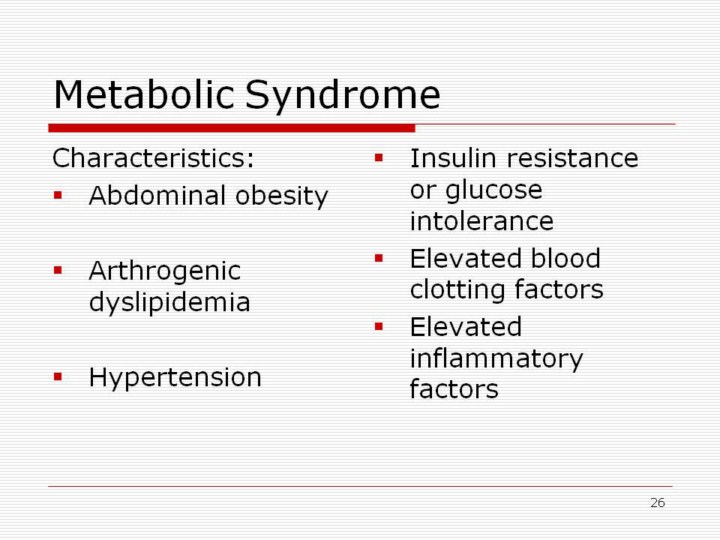Search for most updated materials ↑
| front |1 |2 |3 |4 |5 |6 |7 |8 |9 |10 |11 |12 |13 |14 |15 |16 |17 |18 |19 |20 |21 |22 |23 |24 |25 |26 |27 |28 |29 |30 |31 |32 |33 |34 |35 |36 |37 |38 |39 |40 |41 |42 |43 |44 |45 |46 |47 |48 |49 |50 |51| 52 |53 |54 |55 |56 |57 |58 |59 |60 |61 |62 |63 |review |
 |
Metabolic syndrome refers to a group of symptoms that occur together and promote the development of coronary artery disease, stroke, and type 2 diabetes. Metabolic syndrome is becoming more common in the United States. More than 50 million Americans are estimated to have the condition. Characteristics include: Abdominal obesity Arthrogenic dyslipidemia (Arthrogenic dyslipidemia is high triglycerides, low HDL cholesterol and high LDL cholesterol) Hypertension Insulin resistance or glucose intolerance Elevated blood clotting factors (e.g., high fibrinogen or plasminogen activator inhibitor–1 in the blood) Elevated C-reactive protein [CRP] that causes inflammation |